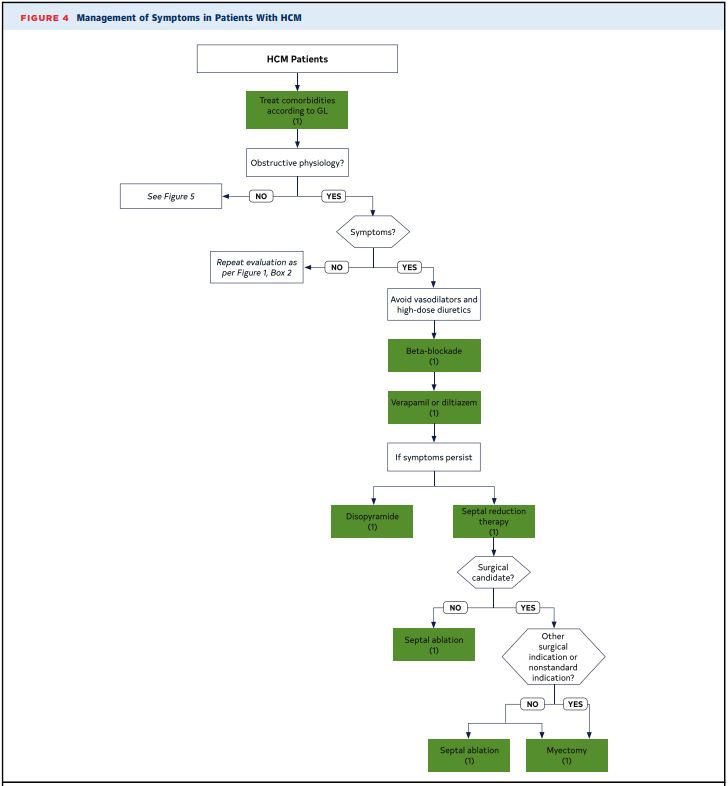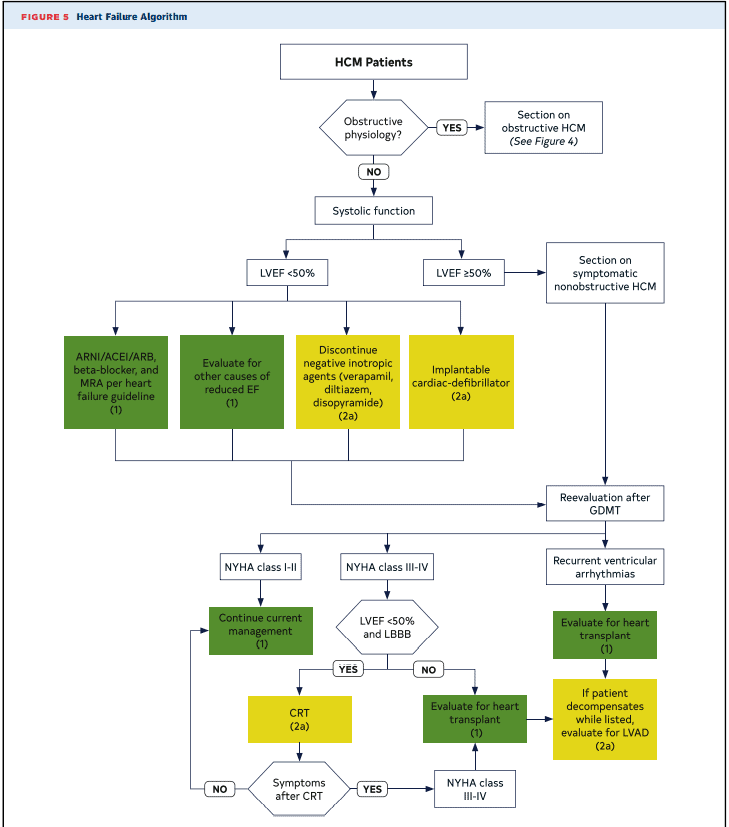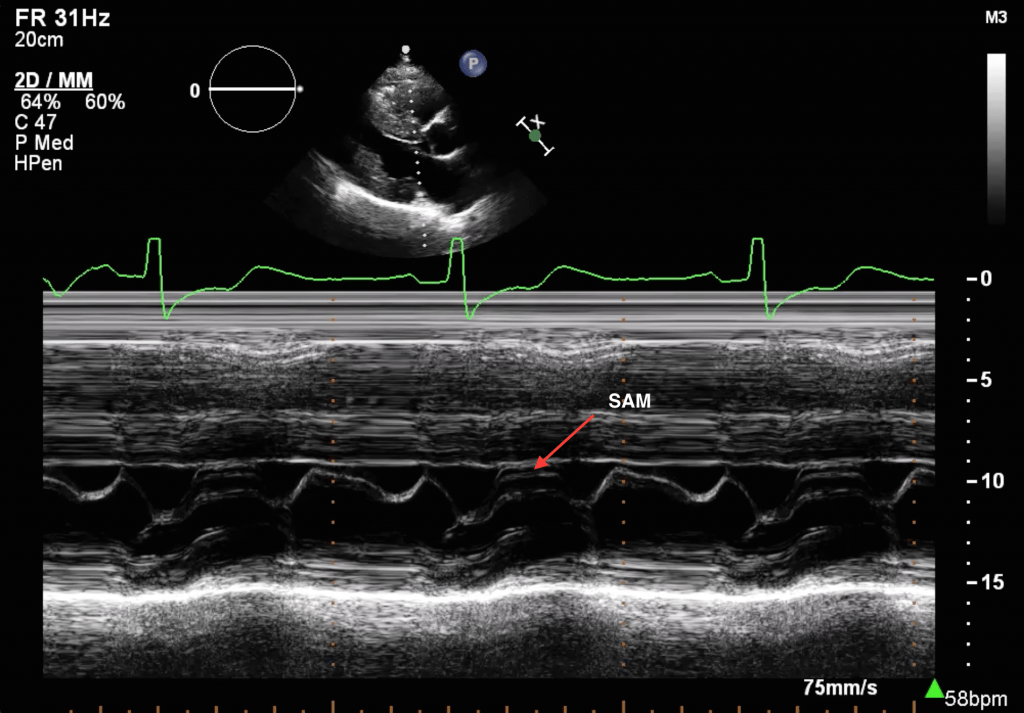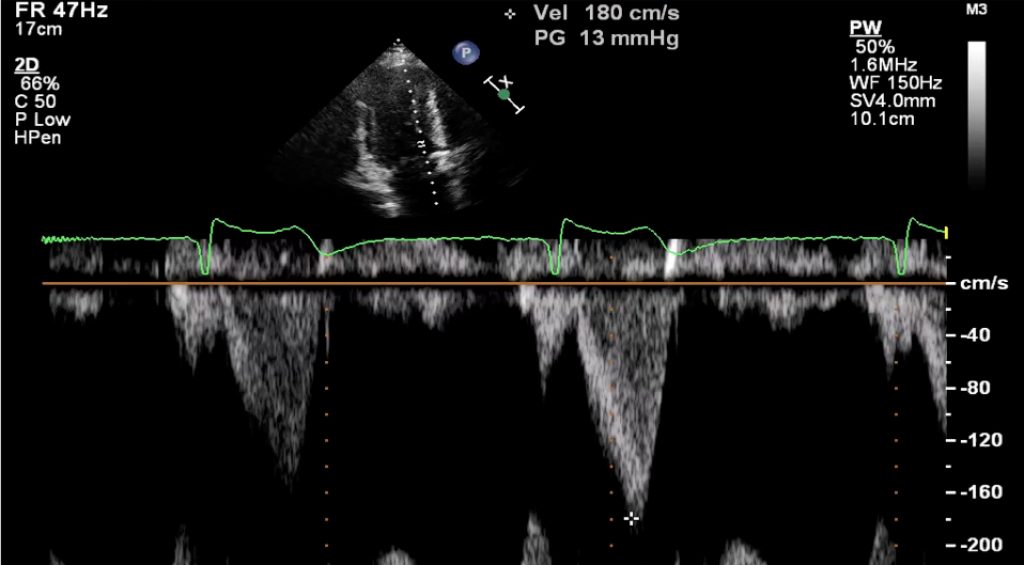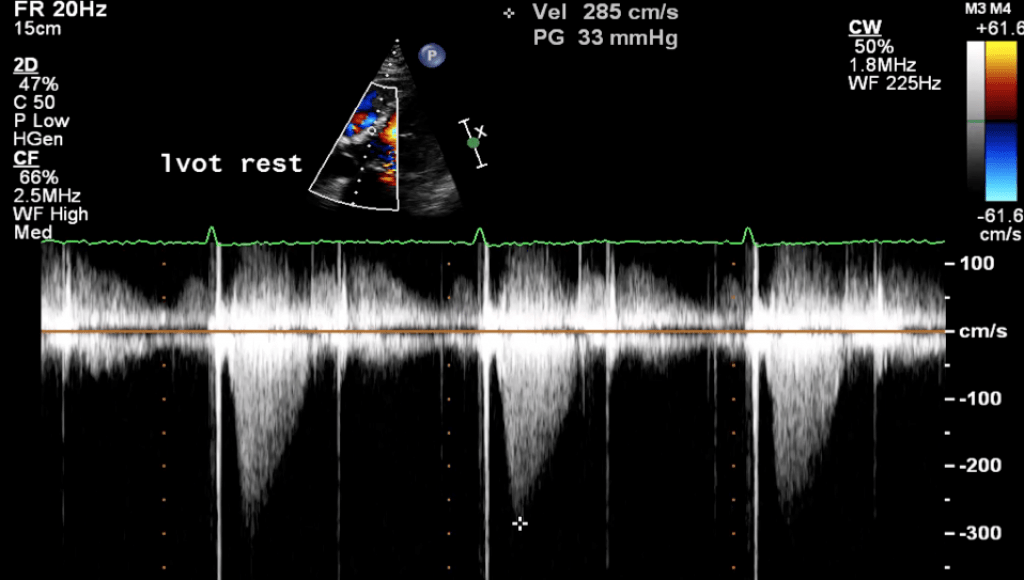- Disease that causes left ventricular hypertrophy
- Autosomal dominant
- Common disease affecting 1 in 500 people
Guideline
Differential Diagnosis
Left ventricular hypertrophy is commonly seen on echocardiography. Therefore important to know the differential.
- Hypertension
- Aortic Stenosis
- Amyloidosis
- Anderson-Fabry Disease
- High-level Athelete
High Yield Echo Features
- Wall thickness
- SAM (Systolic Motion of Mitral Valve)
- Mitral Regurgitation
- LVOT (Left Ventricular Outflow Track) obstruction
- Diastolic Dysfunction
Wall Thickness
- Patient with hypertrophic cardiomyopathy.
- Note significant left ventricular hypertrophy.
- In the short axis there also is papillary muscle hypertrophy.
SAM (Systolic Anterior Motion of Mitral Valve)
- Systolic anterior motion of the mitral valve is commonly seen in patients with HCM.
- Since there is a thickened septum blood flow is high and turbulent through the LVOT.
- The high flow of blood through the LVOT can draw the mitral valve anteriorly and towards the LV outflow track causing more obstruction. This is known as the Ventruri Effect.
- Note the turbulent flow through the LVOT on colour doppler in the parasternal long axis view.
- In the zoomed 5 chamber view you can visualize the mitral valve being sucked into the LVOT.
- SAM can also be M-Mode through the mitral valve.
Mitral Regurgitation
- Commonly seen in Hypertrophic Cardiomyopathy.
- A posterior directed mitral regurgitation jet often accompanies SAM.
- It temporally follows the onset of LVOT obstruction and care should be taken not to confuse its Doppler velocity profile with that of LVOT obstruction.
LVOT Obstruction
- Pulse wave doppler should be used to localize site of obstruction.
- Continuous wave doppler should be used to determine the peak.
- If LVOT gradient less than 30 mmHg Valsalva should be attempted.
- If no significant LVOT obstruction but patient symptomatic should consider Stress Echo.
- Obstructive Physiology defined as a gradient conditions of ≥30 mm Hg.
- Marked gradients ≥50 mm Hg, either at rest or with provocation, represent the conventional threshold for surgical or percutaneous intervention if symptoms cannot be controlled with medications.
- Pulse wave doppler along the septal wall to localize the site of obstruction.
- Note the step-up in gradient.
- Commonly HCM PW/CW is described as “dagger shaped”.
- Continuous wave doppler through the LVOT demonstrating a peak gradient of 33mmHg at rest
- This is considered obstructive physiology.
Diastolic Dysfunction
- Diastolic filling of the left ventricle is impaired in about 80% of individuals with HCOM
- Can even be observed in asymptomatic patients without overt hypertrophy but who are genetically affected.
- No clear relationship exists between the severity of hypertrophy and the severity of diastolic dysfunction.



